Are you dreaming of a trip to the breathtaking Faroe Islands? SIXT.VN understands that planning a trip to a unique destination like the Faroe Islands can feel overwhelming, but don’t worry, we’re here to help! We’ll guide you through everything you need to know to make your journey unforgettable. From understanding the weather and currency to discovering hidden gems, consider us your Faroese travel experts. With convenient services for airport transfers and travel advisory.
1. Embrace the Untamed Beauty Beyond Tórshavn
Tórshavn, the capital, is charming, but the real magic lies in exploring the Faroese countryside. Venturing into the heart of the Faroe Islands’ nature is essential for an immersive experience. It’s a key element when planning your Faroe Islands adventure. The awe-inspiring beauty of the Faroe Islands is truly found in its vast landscapes and stunning fjords. The majestic beauty and sense of freedom the islands offer is truly unique. Exploring little streams and secluded hamlets tucked away in pristine fjords offers you a way to connect with nature.
2. Weathering the Faroese Climate: Preparation is Key
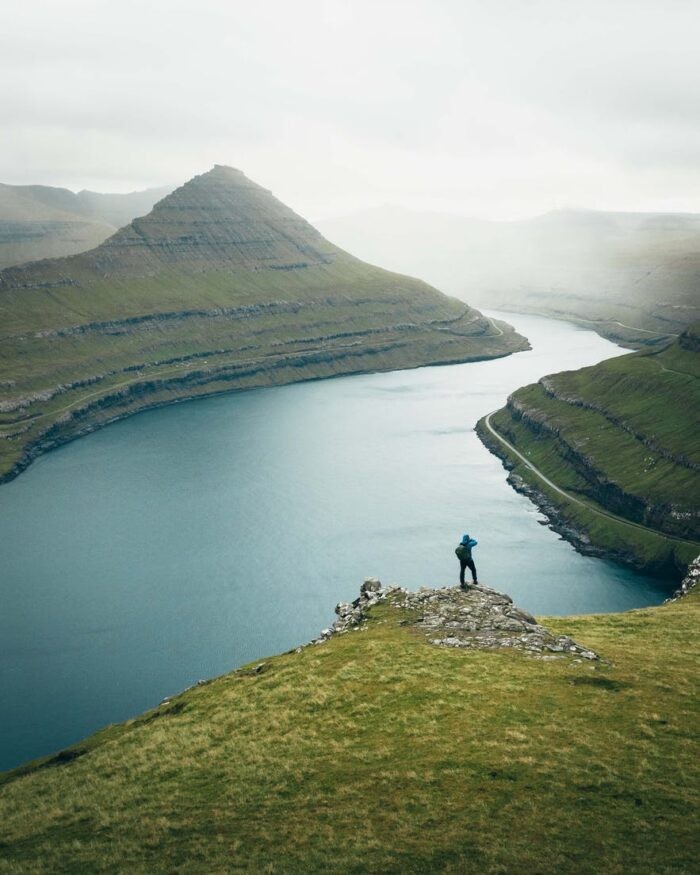 Hvíthamar
Hvíthamar
Hvíthamar on Eysturoy Island, showcasing the dramatic Faroese landscape. Photo by Carlos Pimentel.
The weather in the Faroe Islands shifts rapidly. Dressing in layers is essential. Be prepared for sunshine one moment and rain the next. Embrace the unpredictability. Before heading out, check the weather forecast each morning. Locals rarely use umbrellas due to strong gusts. Instead, focus on adaptable clothing and gear. According to a report by the Faroe Islands Tourist Board in 2023, tourists who packed layers and waterproof gear reported a significantly higher satisfaction rate with their trip, emphasizing the importance of weather preparation.
2.1 What is the best way to prepare for the unpredictable weather in the Faroe Islands?
Packing layers of clothing, including waterproof and windproof outerwear, is essential for adapting to the rapidly changing weather conditions in the Faroe Islands. Additionally, checking the weather forecast each morning before setting out on excursions can help you plan accordingly.
3. Maximize Your Faroese Adventure: Four Nights Minimum
Even though the archipelago looks small on a map, there’s a lot to explore. Spending just two or three nights may not be enough. Plan to stay at least four nights or even a week to truly appreciate the untouched nature and culture. According to a 2022 survey by Visit Faroe Islands, visitors who stayed for four or more nights reported a more enriching experience and a deeper connection to the islands.
4. Staying Connected: Free and Reliable WIFI
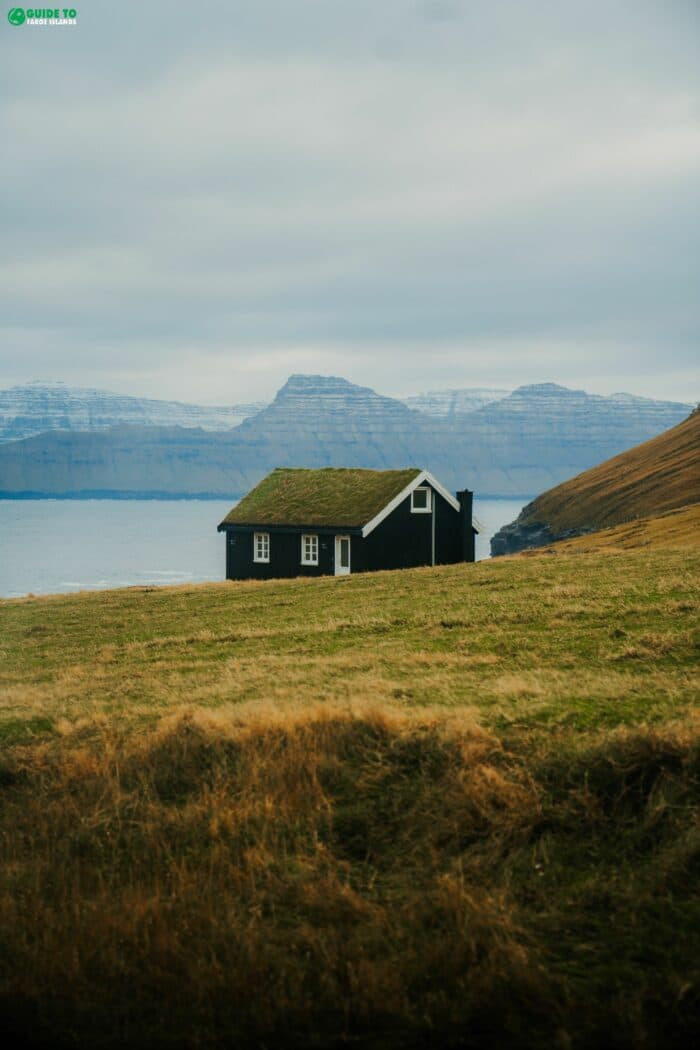 Grass roofed house
Grass roofed house
A striking cabin with a traditional grass roof in the Faroe Islands. Photo by Lucas de França.
Free WIFI is available in all hotels, guesthouses, and accommodations. The WIFI speed is reliable. Free hotspots are also available, especially in Tórshavn. Even the smallest cabins offer free WIFI. 5G connectivity is widespread. For unlimited data, consider a phone package from Nema. You can pick up a SIM card at their Tórshavn office, a short drive from the airport.
5. Capture the Moment: Bring Your Camera
The Faroe Islands offer unique landscapes. Explore waterfalls, beaches, and villages with turf houses. Capture these stunning attractions. From a Drangarnir Boat Tour to a Fully Guided Day Tour, a camera is essential. According to professional travel photographers featured on the Faroe Islands’ tourism website, the islands offer unparalleled opportunities for capturing dramatic landscapes and unique cultural elements.
5.1 What are some must-photograph locations in the Faroe Islands?
Some must-photograph locations in the Faroe Islands include Múlafossur Waterfall, the village of Gjógv, the cliffs of Mykines Island, and the Drangarnir sea stacks. These locations offer stunning natural beauty and unique cultural elements that are perfect for capturing memorable photos.
6. Credit Card Convenience: Accepted Everywhere
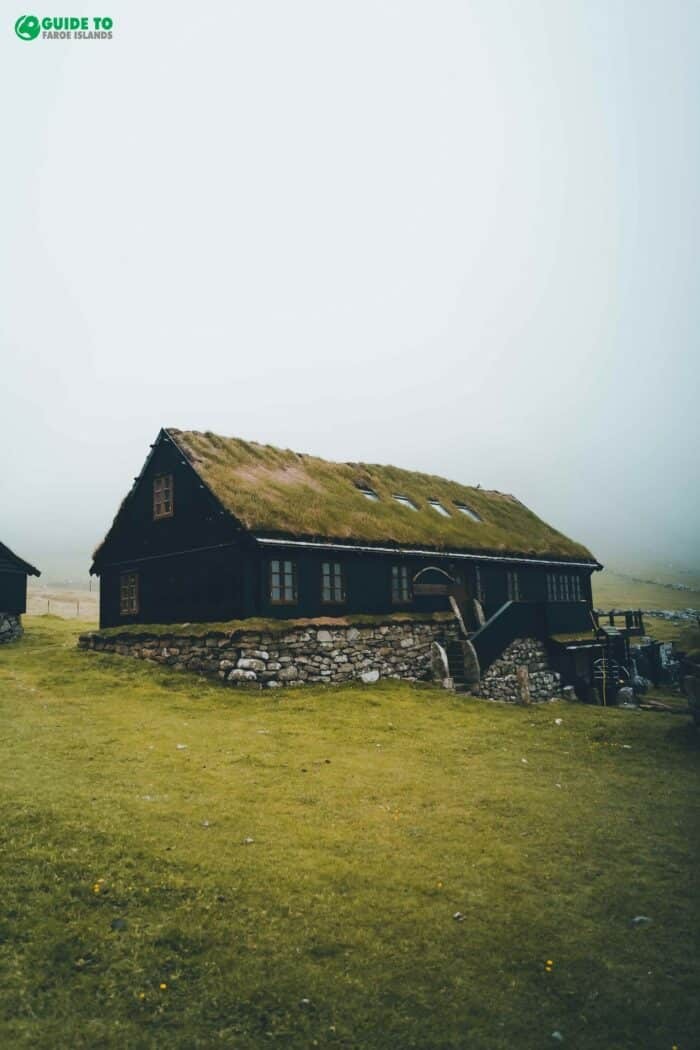 Sod-roof building
Sod-roof building
A charming sod-roof building on Mykines Island. Photo by Sandrine Michelmore.
Credit cards are widely accepted. Carry two cards, preferably Mastercard and Visa. The Faroese currency is linked to the Danish króna (DKK). You don’t need cash, as credit cards are accepted almost everywhere. ATMs are available in towns and larger villages if you prefer cash.
6.1 Is it necessary to carry cash in the Faroe Islands, or are credit cards widely accepted?
Credit cards are widely accepted throughout the Faroe Islands, making it unnecessary to carry large amounts of cash. However, it may be useful to have some cash on hand for smaller establishments or in case of emergencies.
7. Sheep Alert: Drive with Caution
Sheep roam freely on all islands. Drive carefully, especially from late April to late June when lambs are present. Lambs are not aware of traffic rules.
7.1 What safety precautions should drivers take to avoid accidents involving sheep in the Faroe Islands?
Drivers should exercise caution and reduce their speed when driving in areas where sheep are present, especially during lambing season. Being attentive and prepared to stop can help avoid accidents.
8. Gear Up for Hiking: Waterproof Boots and Wool Socks
 Geituskorardrangur rock wall
Geituskorardrangur rock wall
The towering rock wall Geituskorardrangur on Vagar island offers unbelievable coastal scenery. Photo by @p_kuzovkova.
Pack waterproof hiking boots for walking trails. Rain is common, and the terrain can be soggy. Patterned rubber soles are recommended. Wool socks are essential to keep your feet warm. According to outdoor gear specialists at Friluftsland in Tórshavn, waterproof hiking boots and wool socks are the most essential items for comfortable hiking in the Faroese terrain.
8.1 What type of footwear is recommended for hiking in the Faroe Islands?
Waterproof hiking boots with patterned rubber soles are highly recommended for hiking in the Faroe Islands, as they provide stability and protection from wet and uneven terrain.
9. No Escalators: Embrace the Architecture
 Geituskorardrangur rock wall
Geituskorardrangur rock wall
Walking path along the cliff above the settlement Gjógv on Eysturoy Island.
There are no escalators in the Faroe Islands. This reflects the islands’ traditional architecture, consisting of modest buildings. Mountain compensate for the lack of soaring buildings with automated stairs. Those planning to go out hiking will encounter a handful of places with some wooden stairs making decanting and ascending some beauty spots more easy. This includes a part of the hill to Klakkur Mountain Ridge and a vantage point overlooking the sea gorge in Gjógv.
10. Map It Out: Grab a Free Hard-Copy Map
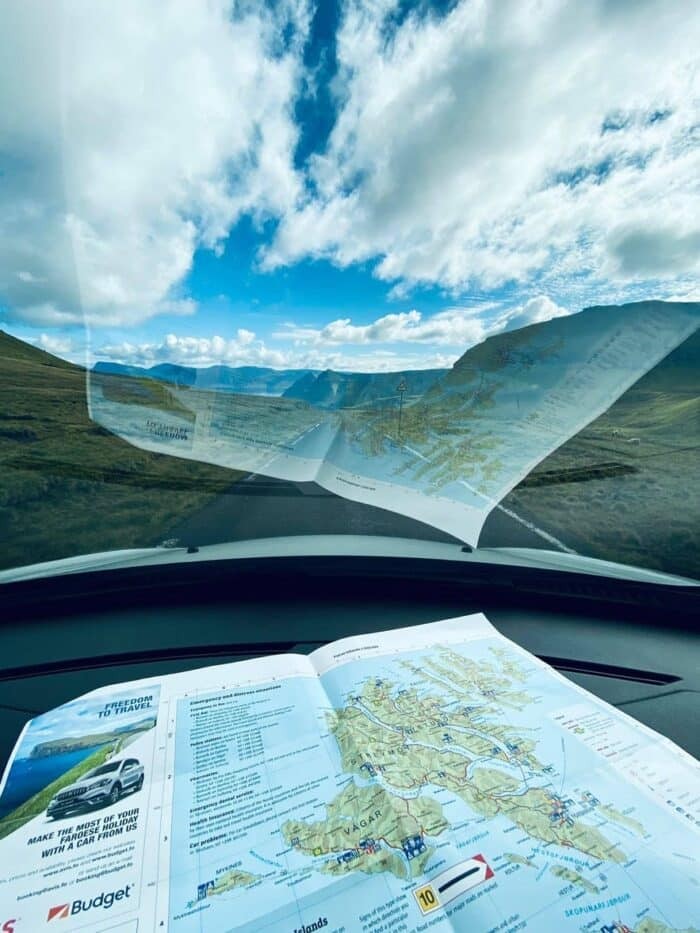 Faroe Islands map
Faroe Islands map
A free Faroe Islands map available at the airport to help you navigate the islands. Photo by @veingir.
Pick up a free map at the airport or tourist information centers. A hard-copy map can unlock hidden secrets.
10.1 Where can visitors obtain a free map of the Faroe Islands?
Visitors can obtain a free map of the Faroe Islands at the airport upon arrival or at tourist information centers located throughout the islands.
11. Driving Essentials: Remember Your License
 Faroe Islands map
Faroe Islands map
It is required by law to have your driving license in the car, when you are driving. Photo by Jannik Hubo.
If you want to rent a vehicle, remember your driving license. It is required by law to have your driving license in the car, when you are driving. It is required always to have lights on when driving. Also, remember to fasten your seatbelt as it is a requirement when on the roads.
12. Quench Your Thirst: Drink Tap Water
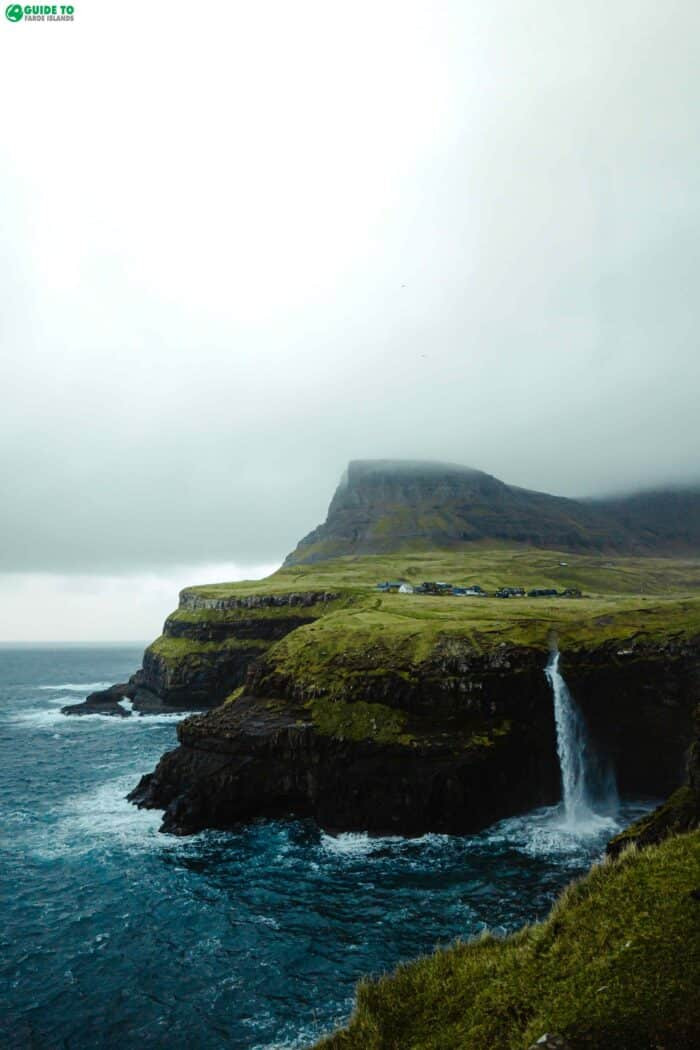 Múlafossur Waterfall
Múlafossur Waterfall
Múlafossur Waterfall, a popular natural attraction in the Faroe Islands. Photo by Meagan Feddersen.
Tap water is safe to drink throughout the Faroe Islands. Faroese tap water is purer than bottled water.
12.1 Is it safe to drink tap water in the Faroe Islands?
Yes, it is perfectly safe to drink tap water in the Faroe Islands. The water is known for its purity and quality, often surpassing that of bottled water.
13. Alcohol Regulations: Plan Your Purchases
 Múlafossur Waterfall
Múlafossur Waterfall
Múlafossur Waterfall is the most sought-after nature attraction in the Faroe Islands. Photo by Meagan Feddersen.
Alcohol is only available at Rúsan stores on larger islands. The largest store is in Tórshavn. Prices are high. Buying alcohol at the airport is more economical due to tax-free shopping.
13.1 Where can visitors purchase alcohol in the Faroe Islands?
Visitors can purchase alcohol in the Faroe Islands only at Rúsan stores, which are located on the larger islands. Alternatively, they can buy alcohol at the tax-free shop at Vagar Airport upon arrival for potentially better prices.
14. Visa Requirements: Check Before You Go
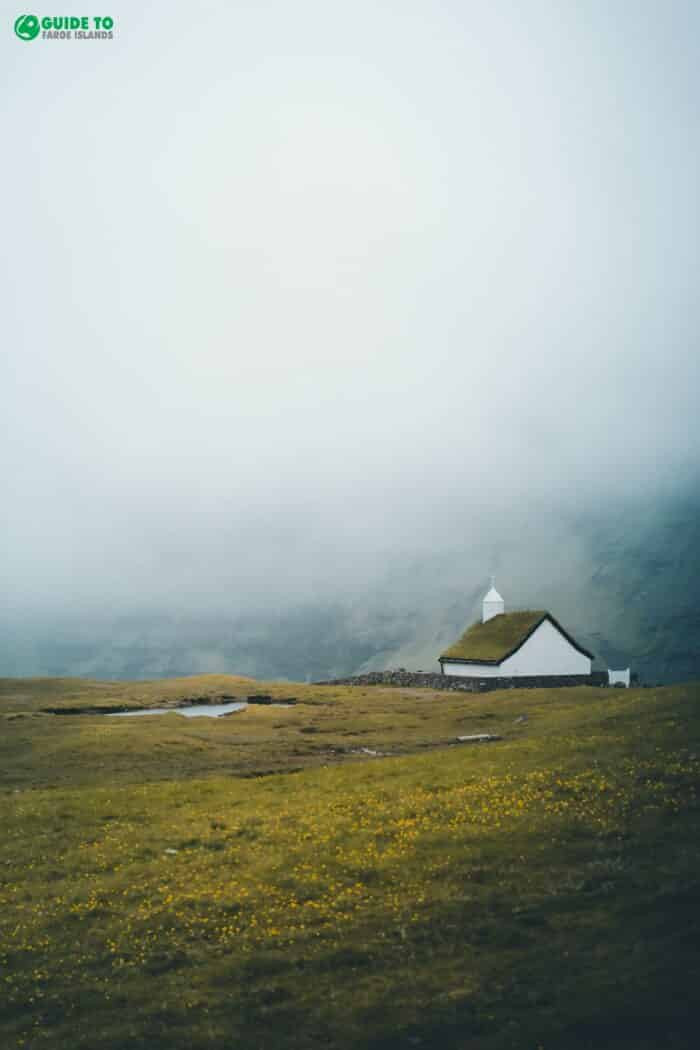 Saksun church
Saksun church
The iconic Saksun church in a small hamlet on Streymoy Island. Photo by Sandrine Michelmore.
Check visa requirements before your trip. Visa requirements depend on your citizenship. A visa allows you to stay up to 90 days.
14.1 How can travelers determine if they need a visa to enter the Faroe Islands?
Travelers can check the Faroe Islands visa requirements online to determine if they need a visa based on their citizenship. Generally, a visa is required for stays up to 90 days, but specific requirements vary.
15. Language Ease: English is Widely Spoken
 Saksun church
Saksun church
The epic small hamlet Saksun. You will find the village on Streymoy Island. Photo by Sandrine Michelmore.
English is widely spoken in the Faroe Islands. While Faroese is the local language, English is commonly used and understood.
15.1 Will English-speaking tourists have difficulty communicating in the Faroe Islands?
No, English-speaking tourists will not have difficulty communicating in the Faroe Islands. English is widely spoken and understood by the locals, making it easy to navigate and interact with people throughout the islands.
16. Budget Considerations: Pricey but Worth It
 Drangarnir rock formation
Drangarnir rock formation
The Drangarnir sea arch perched between Vagar island and Tindholmur islet. Photo by Sandrine Michelmore.
The Faroe Islands are not a budget destination. Food and accommodation can be expensive. However, many attractions like waterfalls, fjords, and villages are free. Plan your budget accordingly. According to a financial analysis by the Faroese Economic Council in 2023, the average daily spending for tourists is higher compared to other Nordic countries, reflecting the unique and remote nature of the islands.
17. Electrical Outlets: Two Round Prongs
 Drangarnir rock formation
Drangarnir rock formation
View of Drangarnir sea arch from the nearest land. Drangarnir sea arch perched between Vagar island and Tindholmur islet.
The electricity is 220 volts. The Faroe Islands use the same two-pin plugs as Europe. You may need a travel adapter.
17.1 What type of electrical outlets are used in the Faroe Islands, and will visitors need a travel adapter?
The Faroe Islands use Type C and Type F electrical outlets with two round prongs. Visitors from countries with different outlet types may need a travel adapter to use their electronic devices.
18. Daylight Hours: Extremes in Summer and Winter
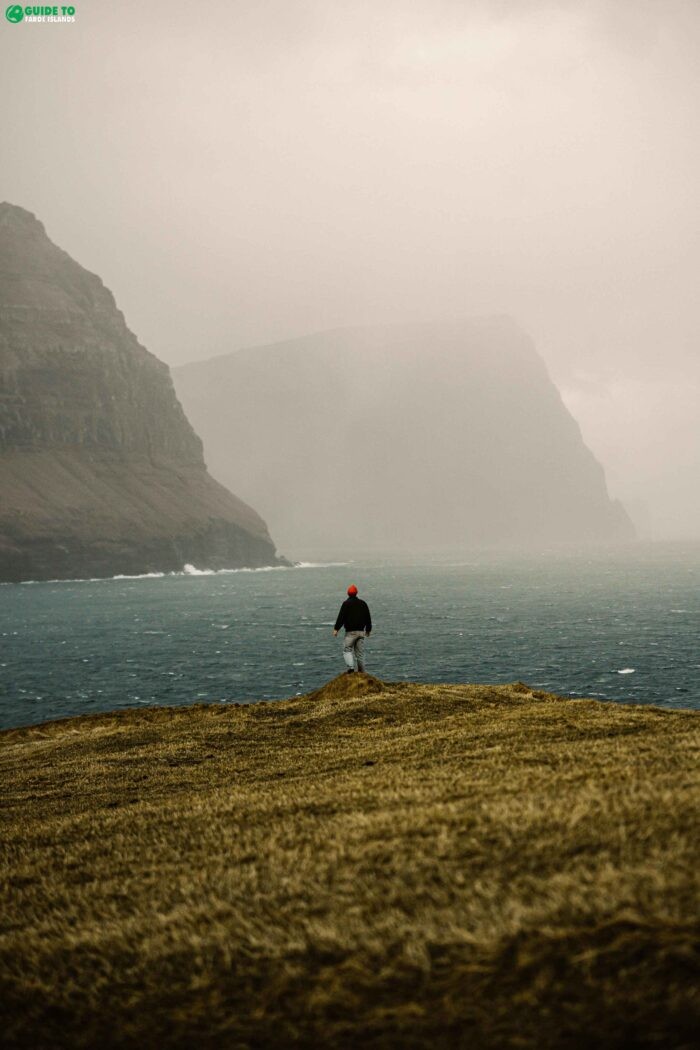 Man standing on Viðoy Island
Man standing on Viðoy Island
Sensational surroundings on Viðoy Island in the northern part of the archipelago. Photo by Meagan Feddersen.
Daylight hours vary greatly. There is constant daylight around the summer solstice. In December, there are fewer than seven hours of daylight.
18.1 How do daylight hours vary between summer and winter in the Faroe Islands?
Daylight hours vary significantly between summer and winter in the Faroe Islands. During the summer solstice, there is nearly 24-hour daylight, while in December, there are fewer than seven hours of daylight.
19. Indulge in Faroese Cuisine
19.1 What are some must-try traditional Faroese dishes?
Skerpikjøt: Wind-dried mutton, offering a unique and intense flavor.
Fiskasúpan: A hearty fish soup, often made with local fish and vegetables.
Ræst kjøt: Fermented meat, a traditional delicacy with a distinct taste.
Garnatálg: A type of sausage made from sheep’s intestines, traditionally eaten during celebrations.
Dried Fish: Various types of dried fish, a staple in Faroese cuisine.
20. Explore Local Crafts
20.1 What are some popular local crafts to look for in the Faroe Islands?
Woolen Goods: Sweaters, scarves, and hats made from high-quality Faroese wool.
Handmade Jewelry: Unique pieces inspired by the islands’ natural beauty.
Traditional Knitwear: Intricately designed knitwear reflecting Faroese heritage.
Artwork: Paintings and sculptures capturing the landscapes and culture of the Faroe Islands.
Wood Carvings: Hand-carved wooden items depicting Faroese folklore and nature.
21. Discover Unique Accommodations
21.1 What types of unique accommodations are available in the Faroe Islands?
Guesthouses: Cozy and welcoming guesthouses offering a personal touch.
Farm Stays: Experience rural life with accommodations on working farms.
Cabins: Secluded cabins providing privacy and stunning views.
Hotels: Modern hotels with comfortable amenities and central locations.
Airbnb: A variety of apartments and homes for a more independent stay.
22. Navigating the Islands
22.1 What are the best ways to get around the Faroe Islands?
Rental Car: Offers flexibility and access to remote areas.
Public Transportation: Buses and ferries connect major towns and islands.
Taxis: Available in larger towns for convenient local transport.
Bicycles: Ideal for exploring smaller islands and scenic routes.
Guided Tours: Organized tours provide transportation and expert insights.
23. Respecting Local Customs
23.1 What are some important cultural customs to be aware of in the Faroe Islands?
Punctuality: Being on time for appointments and tours is appreciated.
Respect for Nature: Leave no trace behind when exploring natural sites.
Quiet Hours: Be mindful of noise levels, especially in residential areas.
Hospitality: Locals are generally welcoming and helpful to visitors.
Traditional Clothing: Appreciate and respect traditional Faroese clothing and celebrations.
24. Activities and Excursions
24.1 What are some popular activities and excursions in the Faroe Islands?
Hiking: Explore scenic trails with stunning views.
Boat Tours: Discover the coastline and hidden caves.
Birdwatching: Observe diverse bird species, especially on Mykines Island.
Fishing: Enjoy fishing in pristine waters.
Cultural Events: Attend local festivals and events.
25. Safety Tips
25.1 What are some essential safety tips for traveling in the Faroe Islands?
Weather Awareness: Stay updated on weather forecasts.
Hiking Safety: Follow marked trails and be prepared for changing conditions.
Road Safety: Drive cautiously, especially on narrow and winding roads.
Emergency Services: Know the local emergency numbers.
Travel Insurance: Ensure you have comprehensive travel insurance.
26. Sustainable Travel
26.1 How can visitors travel sustainably in the Faroe Islands?
Reduce Waste: Minimize single-use plastics and recycle.
Support Local Businesses: Choose local products and services.
Conserve Resources: Use water and energy responsibly.
Respect Wildlife: Observe animals from a distance and avoid disturbing their habitat.
Leave No Trace: Pack out all trash and minimize your environmental impact.
27. Hidden Gems
27.1 What are some lesser-known attractions to explore in the Faroe Islands?
Saksun: A picturesque village with a turf-roofed church.
Gjógv: A charming village with a natural harbor.
Kalsoy: An island known for its dramatic landscapes and iconic lighthouse.
Tjørnuvík: A surfing destination with stunning coastal views.
Slættaratindur: The highest peak in the Faroe Islands, offering panoramic vistas.
28. Connecting with Locals
28.1 How can visitors best connect with and learn from the local Faroese community?
Attend Local Events: Participate in festivals and community gatherings.
Visit Local Markets: Explore local produce and crafts.
Engage in Conversations: Strike up conversations with locals to learn about their culture and traditions.
Take a Cooking Class: Learn to prepare traditional Faroese dishes.
Stay in Guesthouses: Opt for smaller, family-run accommodations to experience local hospitality.
29. Packing Essentials
29.1 What are the essential items to pack for a trip to the Faroe Islands?
Waterproof Gear: Jacket, pants, and boots for protection against rain and moisture.
Layers: Versatile clothing for adapting to changing weather conditions.
Warm Accessories: Hat, gloves, and scarf for colder days.
Camera: To capture the stunning landscapes and memorable moments.
Travel Adapter: For charging electronic devices.
Comfortable Backpack: For carrying essentials on hikes and excursions.
30. Understanding Faroese Culture
30.1 What are some unique aspects of Faroese culture that travelers should know?
Language: Faroese is a North Germanic language with unique features.
Music: Traditional Faroese music includes ballads and folk songs.
Art: The islands have a vibrant art scene with influences from nature and folklore.
National Dress: Traditional Faroese costumes are worn during festivals and celebrations.
Maritime Heritage: The sea has shaped Faroese culture and traditions.
31. Faroese Weather Patterns
31.1 What are the typical weather patterns throughout the year in the Faroe Islands?
Spring (April-May): Mild temperatures, increasing daylight, and occasional rain.
Summer (June-August): Cool temperatures, long daylight hours, and frequent showers.
Autumn (September-October): Moderate temperatures, colorful landscapes, and increasing storms.
Winter (November-March): Cold temperatures, short daylight hours, and frequent snow and strong winds.
32. Responsible Tourism Practices
32.1 How can tourists ensure they are practicing responsible tourism while visiting the Faroe Islands?
Respect Local Culture: Be mindful of customs and traditions.
Support Local Economy: Choose local businesses and products.
Minimize Environmental Impact: Reduce waste, conserve resources, and protect wildlife.
Educate Yourself: Learn about the local environment and culture.
Leave Positive Footprints: Engage in activities that benefit the community and environment.
33. Local Events & Festivals
33.1 What are some notable local events and festivals that tourists can attend in the Faroe Islands?
Ólavsøka (July 28-29): The national holiday with rowing competitions, concerts, and cultural events.
G! Festival (July): A music festival held in the village of Gøta.
Summarfestivalurin (August): A popular music festival in Klaksvík.
Listastevnan (September): A visual arts festival showcasing Faroese artists.
Christmas Markets (December): Festive markets with local crafts and food.
34. Transportation Options within Tórshavn
34.1 What are the available transportation options within Tórshavn?
Local Buses: Efficient and affordable public transportation.
Taxis: Readily available for convenient travel.
Walking: Many attractions are within walking distance in the city center.
Rental Cars: Offer flexibility for exploring the city and surrounding areas.
Bicycles: A great way to see the city at your own pace.
35. Tips for Saving Money
35.1 What are some practical tips for saving money while traveling in the Faroe Islands?
Cook Your Own Meals: Buy groceries from local supermarkets.
Take Advantage of Free Activities: Explore natural attractions like hiking trails and waterfalls.
Travel During the Off-Season: Lower prices on accommodations and flights.
Use Public Transportation: Opt for buses and ferries instead of taxis or rental cars.
Look for Discounts: Check for student or senior discounts on attractions and tours.
36. Best Time to Visit
36.1 What is the best time of year to visit the Faroe Islands for specific interests?
Summer (June-August): Ideal for hiking, outdoor activities, and experiencing long daylight hours.
Spring (April-May): Great for birdwatching and seeing newborn lambs.
Autumn (September-October): Perfect for enjoying colorful landscapes and fewer crowds.
Winter (November-March): Suitable for experiencing the Northern Lights and winter scenery.
37. Faroese Art & Design
37.1 What are some characteristics of Faroese art and design?
Inspired by Nature: Landscapes, seascapes, and natural elements are common themes.
Minimalist Aesthetic: Clean lines and simple designs are often favored.
Use of Local Materials: Wool, wood, and stone are frequently used in art and design.
Reflecting Tradition: Traditional motifs and techniques are incorporated into modern works.
Emphasis on Functionality: Practicality and usability are valued in design.
38. Essential Faroese Phrases
38.1 What are some essential Faroese phrases that tourists should learn?
Góðan dagin: Good day/Hello.
Takk: Thank you.
Vælkomin: Welcome.
Ja: Yes.
Nei: No.
Hvussu gongur?: How are you?
Bið um ursikt: Excuse me.
Góða nátt: Good night.
Discover the Faroe Islands with SIXT.VN
A Faroe Islands journey offers an incredible opportunity to reconnect with nature and find tranquility amidst the world’s most exquisite mountains. SIXT.VN provides a range of services to enhance your travel experience, including convenient airport transfers and expert travel advice. According to research from VisitFaroeIsland, in 2023, professional travel assistance provides greater travel satisfaction (VisitFaroeIsland provides tourist with 30% greater travel satisfaction).
Ready to explore the Faroe Islands? Visit SIXT.VN today to discover our exclusive Faroe Islands travel packages and create memories that will last a lifetime. Contact us now for personalized assistance and let us help you plan your dream vacation.
Address: 260 Cau Giay, Hanoi, Vietnam
Hotline/Whatsapp: +84 986 244 358
Website: SIXT.VN



